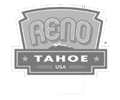Every Friday and Saturday night, dozens of 20-somethings living near California State University, Sacramento, board a downtown-bound bus with a clear-eyed objective: To party at Sacramento’s thriving bar and club scene, but to steer clear of a costly drunken driving arrest, or worse, an alcohol-fueled car crash.
Their ride is a “party” bus called the SacTown Hopper.
It’s run by two sisters, Sacramento State graduates Lisa and Laura Allen, who like to hit the clubs themselves, and whose father, Bill, happens to own a bus company with a vehicle available for what amounts to an experimental niche transit service.
“We needed something like this in Sacramento,” 23-year-old Lisa Allen said. Taxis can be expensive, and designated drivers don’t always make good on their promise not to drink, she said. “Our dad had the buses, and he said go for it.”
For $10, revelers can loop from college-area apartments, mainly along La Riviera Drive, to the nightclub clusters on R, L, K and J streets, and back home again, some ending the night slumbering in their seats, some still dancing. (The bus has a plastic-lined garbage can – also useful for those who party more than their stomachs can handle.)
The fledgling business, in operation since March, reflects what California traffic safety officials say is a significant social shift away from a time when drinking and driving was considered acceptable.
The number of people involved in drunken-driving crashes has dropped dramatically in the last half decade in California. Although safety officials say they have not analyzed that data by age, the trend appears to apply as well for the age group most likely to drink and drive – people in their 20s.
“The dangers of drunk driving are beginning to hit home, including with young people,” said Chris Cochran of the state Office of Traffic Safety.
Officials credit several years’ worth of federal and state-funded traffic safety awareness programs, as well as tougher laws and increased police enforcement. In Sacramento, police have stepped up sobriety checkpoints, including on downtown streets near restaurants, bars and clubs.
State officials also recently brought their RUOK? campaign to Sacramento – parking a car in front of popular nightspots with its front half painted like a police vehicle, and a sign that reads: “This ride costs up to $10,000,” and its back half painted like a taxi, with a sign: “This ride costs $40.”
Those trends have created a business opportunity for the Allen sisters, whose dad runs Allen Transportation Co. They said they got the idea while riding golf-cart taxis around the Miami club scene. The SacTown Hopper averages 50 to 70 riders each weekend night and had a record 136 riders a few Fridays ago after college finals week, Lisa Allen said. The hourly bus runs start at 9 p.m. and last until after 1:30 a.m.
In contrast, Sacramento Regional Transit buses run only until about 10 p.m., too early to be used by late-night bar patrons, and RT officials don’t consider Hopper a competitor.
“I look at (the Hopper) as filling a specialty niche,” RT’s Mark Lonergan said. “Hopefully they can make a go of it.”
The sleek, green-striped bus is often a high-decibel, booze-enhanced, rolling party. “We call it the Hopper lifestyle,” Lisa Allen said.
Friday night on the 10 p.m. bus, about 20 riders strapped on pink Hopper wristbands, good for bus rides that night, as well as free entry and line-jumping privileges at some clubs.
Music blared. Riders chatted in the aisles. Two guys, with Mickey’s Fine Malt Liquor cans in hand, worked their phones trying to locate a midtown address of a party they’d been invited to.
A couple of boisterous former high school football players did pull-ups on the safety bars and debated whether the running game really sets up the passing game. A couple of riders discussed the merits of dive bars. Their conclusion: the older and dumpier, the better.
Kelli Nolan, 21, a Sacramento State student, stood with friends headed to Blush Ultra Lounge on K Street. She said she often takes the Hopper, even though she has a car. “Downtown there are cops swarming all over. Paying $10 is a lot safer than getting a DUI and paying thousands of dollars. Plus, I like the energy on the bus. You meet people. It’s fun.”
“I am going to give it to our generation,” said Jairon Jackson, 23, a Sacramento State student headed to K Street. “We are being more responsible. We are going to party real hard but be safe about it.”
Garrett Van Vleck, a co-owner of the Shady Lady and the new Lowbrau beer hall, calls the Hopper a complement to the growing downtown bar scene. “The more it expands, the better.”
Law enforcement officials say they support the Hopper concept, as well, but with some concerns.
“Anything that minimizes people getting behind the wheel impaired, we support,” said California Highway Patrol spokesman Adrian Quintero. He said the bus company, however, must not allow minors to drink on board, and should assist riders who are too intoxicated to care for themselves.
The bus stops are near student apartment complexes, so riders can walk home, but some of those stops are also at parking lots. Quintero said officials don’t want drinkers to hop into their cars after getting off the bus.
Sacramento police spokesman Doug Morse said the department has not had any reports of problems involving the Hopper, but said police don’t want young people to “overindulge” just because they don’t have to drive.
The Allens recently tried a second bus they call the Lil Hopper for shorter, more frequent loops within downtown, hitting hotels and residential areas. That hasn’t proven viable yet, but they said they may try to expand again at some point.
“I think this could go anywhere,” Bill Allen said. “It could go to other parts of town, as long as it doesn’t last more than an hour per loop. You can do this in any college town.”











Leave a Reply